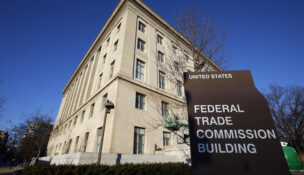Promissory Estoppel
By: dmc-admin//November 1, 2006//
The question of the extent of a court’s power to award damages in a promissory estoppel case is not one that is likely to be resolved soon.
At its heart, the issue involves a topic of great division on the Wisconsin Supreme Court — the distinction between tort and contract. See Linden v. Cascade Stone Co., Inc., 2005 WI 113, 283 Wis.2d 606, 699 N.W.2d 189 (debating whether contract law is drowning in a sea of tort, or whether tort law is drowning in a sea of contract).
The “traditional” view of promissory estoppel is that it serves as merely a substitute for consideration in contract cases. S. Williston, “The Law of Contracts” sec. 139, at 307 (1920).
Yet another view is that, “promissory estoppel is promissory estoppel,” an equitable form of relief that sits on its own bottom. Eric Mills Holmes, “The Four Phases of Promissory Estoppel,” 20 Seattle U.L.Rev. 45, 46 n.5 (1996).
The most “progressive” view has all but ceased to recognize any difference between contract and tort: “People make promises, people break promises, other people get hurt. Is this tort? Is this contract? As Karl Llewellyn once pungently remarked, ‘What the hell!’” Charles L. Knapp, “Rescuing Reliance: The Perils of Promissory Estopppel,” 49 Hastings L.J. 1191, 1244 n.6 (1998).
In Hoffman v. Red Owl Food Stores, 26 Wis.2d 683, 133 N.W.2d 267 (1965), the Wisconsin Supreme Court rejected the “traditional” view. It is still not clear, however, where exactly promissory estoppel sits: all alone; or somewhere on a tort/contract continuum.
The most recent Wisconsin Supreme Court case to consider the issue is Scott v. Savers Property & Casualty Ins. Co., 2003 WI 60, 262 Wis.2d 127, 663 N.W.2d 715.
Writing for the court, Chief Justice Shirley S. Abrahamson took a progressive view of the matter. Id., 663 N.W.2d at 729-730.
In a concurrence, then-Justice Diane S. Sykes took a very traditional view. Id., at 731-732.
However, the case produced five separate opinions in all, and the promissory estoppel issue was rather tangential to the governmental immunity issue, so it may not be the best indicator of what would happen if the classification of promissory estoppel was dispositive of a case.
The issue is relevant, because, as noted above, where to draw the line between contract and tort is a subject of enormous contention in Wisconsin.
At some point, the court will face a case with the following facts: there is no contract, but the elements of promissory estoppel are met. The plaintiff’s damages far exceed what he could be awarded in contract, and specific performance is insufficient to produce an equitable result.
| |
||
|
Related Article |
||
| |
||
The question is, “Can the court really award whatever damages are necessary to prevent injustice, even though that award would exceed what could have been awarded if a contract did exist, and exceeds what could be ordered via specific performance?”
Suppose in the case at bar, for example, the plaintiff could have shown that the defendant’s failure to pay him the $250,000 was the proximate cause of $500,000 in damages.
If there was an actual contract, the court could not award that much. But the language of the court — “A court, in fashioning a remedy, can consider any equitable or legal remedy which will ‘prevent injustice.’” (emphasis in original) — suggests that it could.
Given the vehement disagreement on the Supreme Court over the distinction between tort and contract in the economic loss doctrine context, this issue may present a fertile battleground, as well.
– David Ziemer
Click here for Main Story.
David Ziemer can be reached by email.
Legal News
- FTC bans non-competes
- Gov. Evers seeks applicants for Dane County Circuit Court
- Milwaukee man charged in dismemberment death pleads not guilty
- Democratic-led states lead ban on the book ban
- UW Madison Professor: America’s child care crisis is holding back moms without college degrees
- History made in Trump New York trial opening statements
- Prosecutor won’t bring charges against Wisconsin lawmaker over fundraising scheme
- Republican Wisconsin Senate candidate says he doesn’t oppose elderly people voting
- Vice President Harris to reveal final rules mandating minimum standards for nursing home staffing
- Election workers fear threats to their safety as November nears
- Former law enforcement praise state’s response brief in Steven Avery case
- Eric Toney announces re-election bid for Fond du Lac County District Attorney
WLJ People
- Power 30 Personal Injury Attorneys – Russell Nicolet
- Power 30 Personal Injury Attorneys – Benjamin Nicolet
- Power 30 Personal Injury Attorneys – Dustin T. Woehl
- Power 30 Personal Injury Attorneys – Katherine Metzger
- Power 30 Personal Injury Attorneys – Joseph Ryan
- Power 30 Personal Injury Attorneys – James M. Ryan
- Power 30 Personal Injury Attorneys – Dana Wachs
- Power 30 Personal Injury Attorneys – Mark L. Thomsen
- Power 30 Personal Injury Attorneys – Matthew Lein
- Power 30 Personal Injury Attorneys – Jeffrey A. Pitman
- Power 30 Personal Injury Attorneys – William Pemberton
- Power 30 Personal Injury Attorneys – Howard S. Sicula











